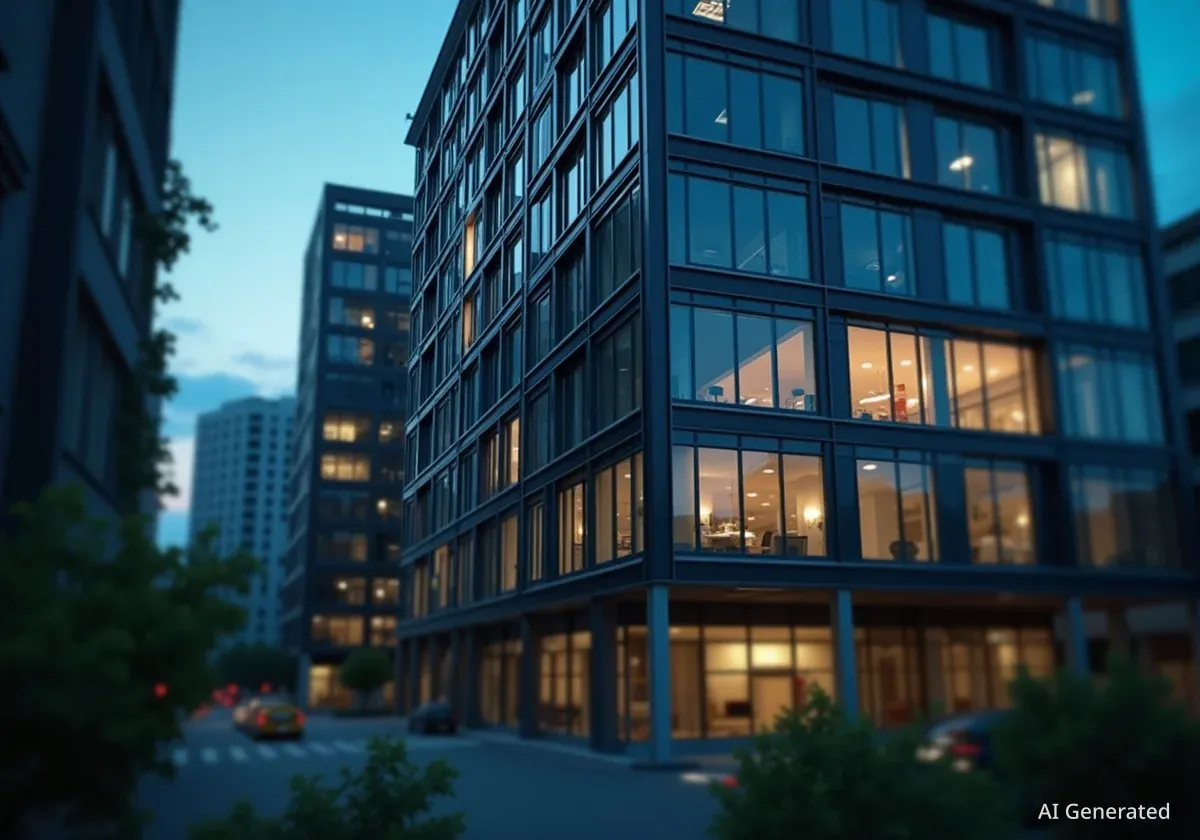The Washington, D.C. metropolitan real estate market is undergoing significant changes driven by new federal government policies and workforce adjustments initiated in 2025. These shifts are creating measurable impacts across the region's commercial and residential sectors, affecting everything from office vacancy rates in the city's core to housing demand in the Maryland and Virginia suburbs.
Historically stabilized by federal employment, the area's property market is now navigating a period of uncertainty. Reductions in government staffing and a reevaluation of leased office space are creating new challenges for landlords and opportunities for certain investors, fundamentally altering the economic landscape of the nation's capital.
Key Takeaways
- Federal agencies are reducing their physical footprint, leading to higher office vacancy rates in Washington, D.C.
- Housing demand is softening in suburban communities heavily reliant on federal government employment.
- A split market is emerging, with core urban areas remaining strong while some commuter suburbs face a slowdown.
- Investors are shifting focus to property conversions and markets with robust private-sector job growth.
Federal Workforce Changes Rattle Office Market
The most immediate effect of the administration's new direction is visible in the commercial office sector. Federal agencies, traditionally the largest tenants in the Washington, D.C. area, have begun to scale back their physical presence. This trend is a direct result of hiring freezes, early retirements, and broader organizational restructuring.
Consequently, office vacancy rates have started to climb, particularly in downtown Washington and surrounding commercial hubs like Arlington and Alexandria in Virginia. While premier office buildings with high-profile tenants have been largely shielded from the downturn, older, mid-tier properties are facing significant pressure to retain occupants.
Landlord Concessions on the Rise
To compete for a smaller pool of tenants, owners of struggling office buildings are offering substantial incentives. These include extended rent-free periods, generous budgets for tenant improvements, and more flexible lease terms. This shift marks a significant change in a market long defined by stable government leases.
This situation is also accelerating a move toward adaptive reuse. A growing number of property owners are now actively exploring converting underperforming office buildings into other uses. Popular alternatives include residential apartments, hotels, and specialized laboratory spaces, reflecting a long-term strategic pivot away from a reliance on government tenancy.
A Divided Residential Market Emerges
The stability of the D.C. region's housing market has long been tied to the steady presence of federal jobs. As government staffing levels decrease, that stability is being tested, creating a noticeable divide in the residential landscape.
Suburban Markets Feel the Pressure
Communities in Northern Virginia and Maryland that are heavily dependent on federal employment are experiencing a clear slowdown. Homes in these areas are remaining on the market for longer periods, and sellers are increasingly finding it necessary to lower their price expectations to attract buyers.
This cooling trend is creating what some analysts are calling a buyer's market in specific suburban submarkets. With more inventory and less competition, prospective homeowners are regaining negotiating power that was absent in previous years.
Resilience in Diversified Neighborhoods
In contrast, neighborhoods with a diverse economic base are performing much better. Areas with strong private-sector employment, such as technology and healthcare hubs in Fairfax and Montgomery counties, continue to see healthy demand. Similarly, core urban D.C. neighborhoods with limited housing stock and strong amenities remain highly competitive.
Well-maintained single-family homes and renovated rowhouses in desirable school districts still frequently receive multiple offers. This bifurcation highlights a market that is no longer moving in a single direction but is instead highly dependent on local economic drivers beyond the federal government.
Rental Sector Mirrors Housing Trends
The dynamics playing out in the for-sale housing market are also being reflected in the rental sector. Demand and pricing now vary significantly based on location and proximity to private-sector job centers versus federal agencies.
Apartment buildings in downtown D.C. and in transit-oriented developments continue to attract tenants, allowing landlords to maintain or even increase rents. These areas appeal to a wide range of renters who value access to jobs, dining, and cultural attractions.
However, the rental market is softening in suburban areas closely linked to federal employment centers. To combat rising vacancy, landlords in these locations are resorting to concessions, a clear sign of weakening demand. Common incentives include:
- One or more months of free rent
- Waived amenity fees
- Complimentary parking spaces
- Reduced security deposits
This trend is also influencing the decisions of multifamily developers. According to industry reports, some new apartment projects in slower submarkets have been paused or redesigned, while construction continues in areas with more diverse and resilient economic foundations.
Investors Adapt to New Market Realities
The shifting market conditions are forcing real estate investors to rethink their strategies. While some see risk, others identify new opportunities created by the political and economic changes.
"Savvy investors are no longer relying on the old playbook. They are looking for value in distressed assets and betting on the growth of non-government industries to drive future returns," noted one local real estate analyst.
A primary focus for many investors is the acquisition of vacant or underutilized office buildings with the intent to convert them. This strategy banks on the long-term demand for residential housing and other property types in a region with a growing population.
Other investors are shifting their capital away from government-dependent suburbs and toward communities with strong private industries. Sectors that remain robust in the D.C. metro area include:
- Defense contracting
- Cybersecurity
- Biotechnology and healthcare
- Professional and consulting services
This strategic reallocation of capital is expected to further widen the performance gap between different parts of the region.
Broader Policy Implications and Future Outlook
Beyond workforce changes, other federal policies could also influence the market. Potential adjustments to international trade tariffs, environmental deregulation, and immigration rules all have the capacity to affect construction costs, labor availability, and housing demand from international professionals.
The long-term trajectory of the Washington, D.C. real estate market now hinges on how federal policies continue to evolve. If the trend of government downsizing persists or if agencies are relocated out of the region, the current market softness could become a prolonged condition.
What is clear in 2025 is that the D.C. market's sensitivity to political shifts is more pronounced than ever. The decisions made within the federal government are not just shaping national policy; they are actively reshaping the neighborhoods and economy of the capital region itself.





